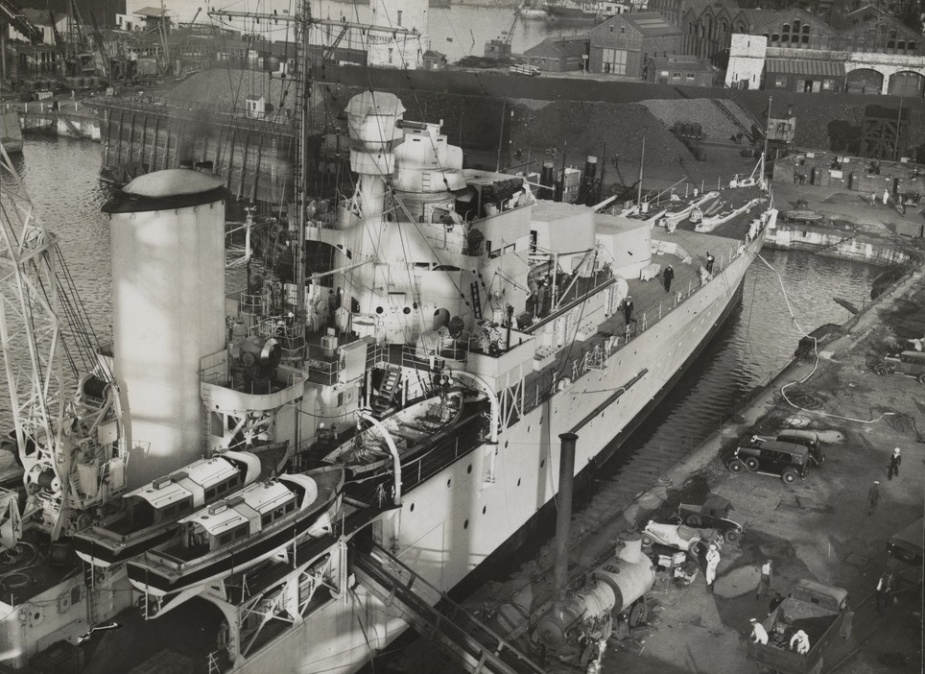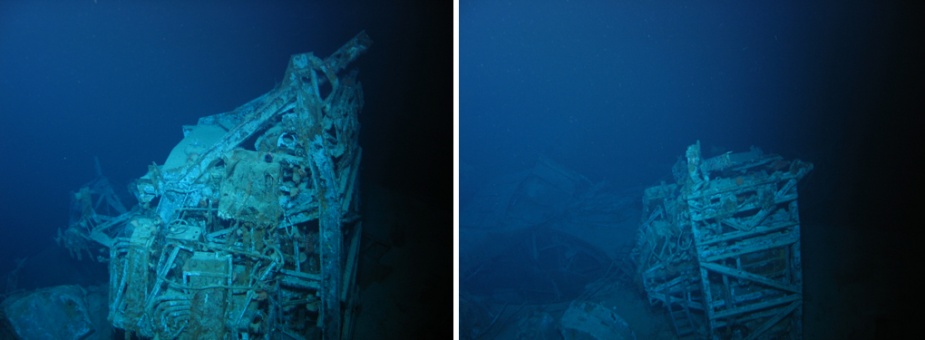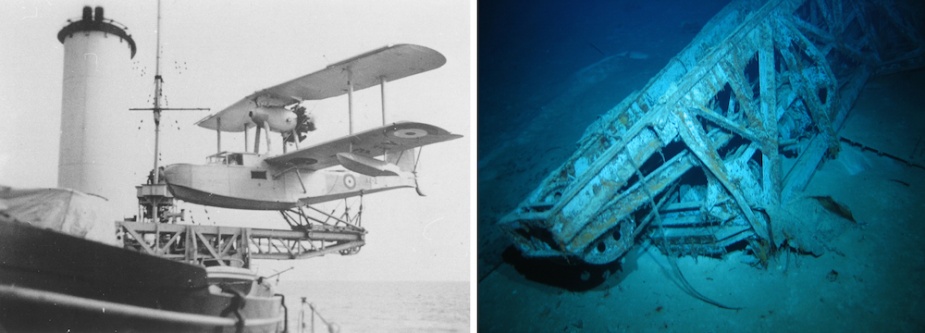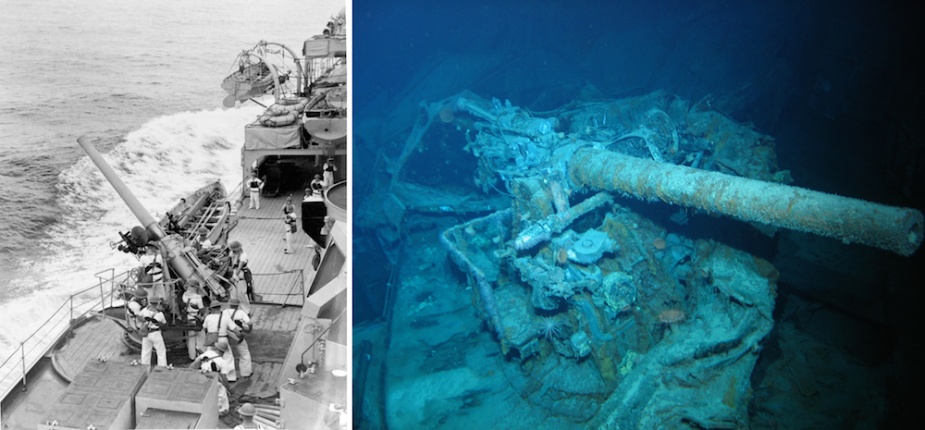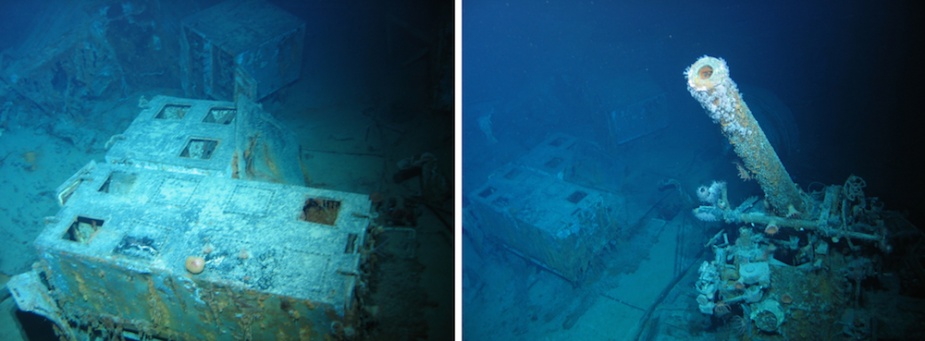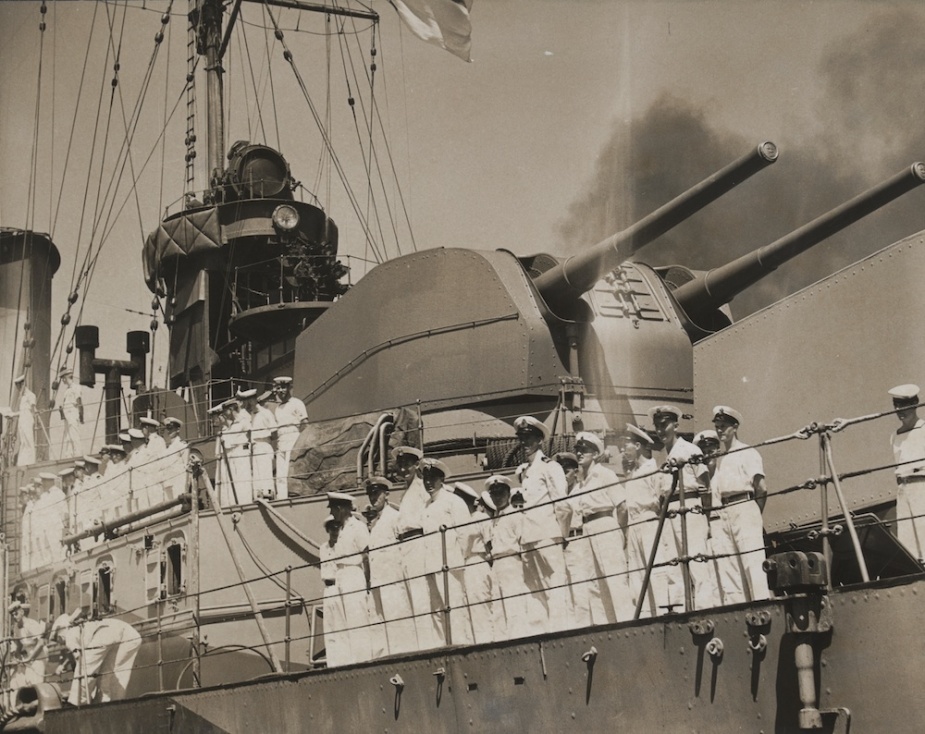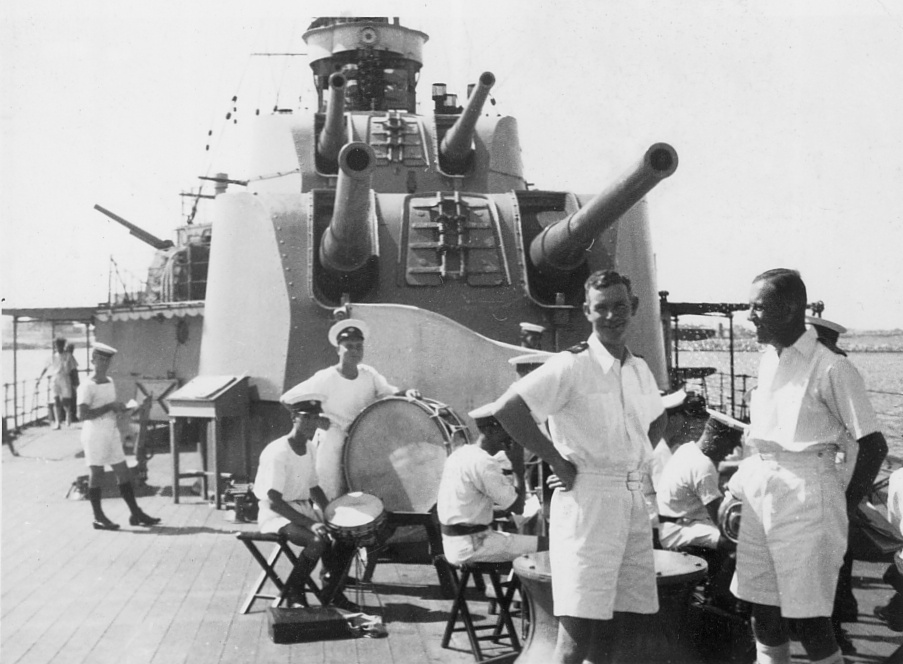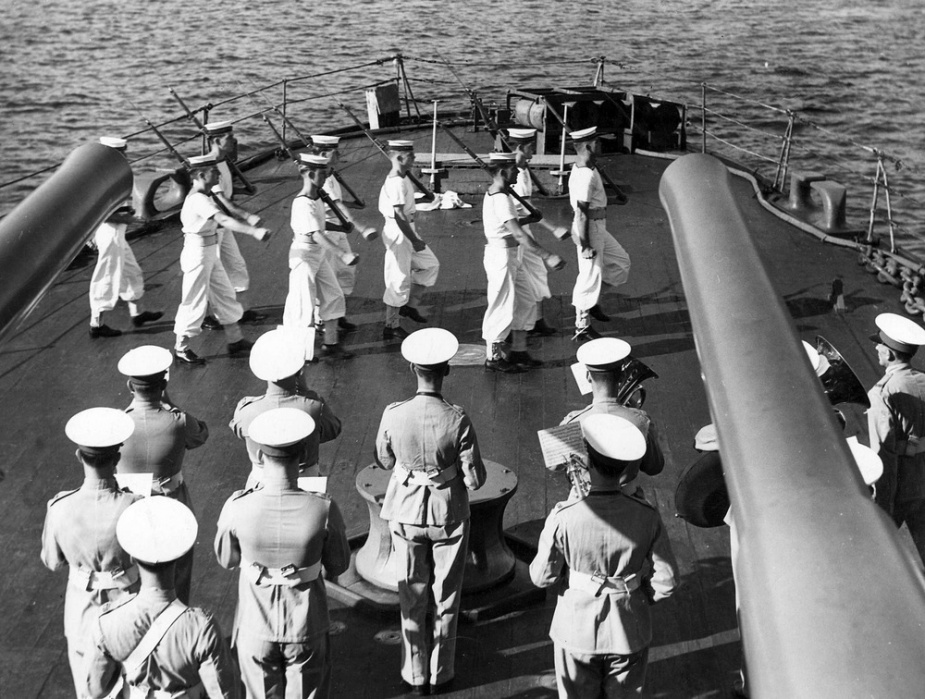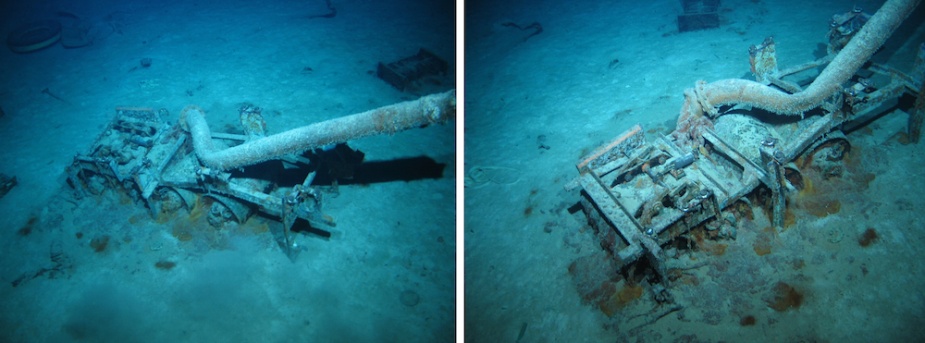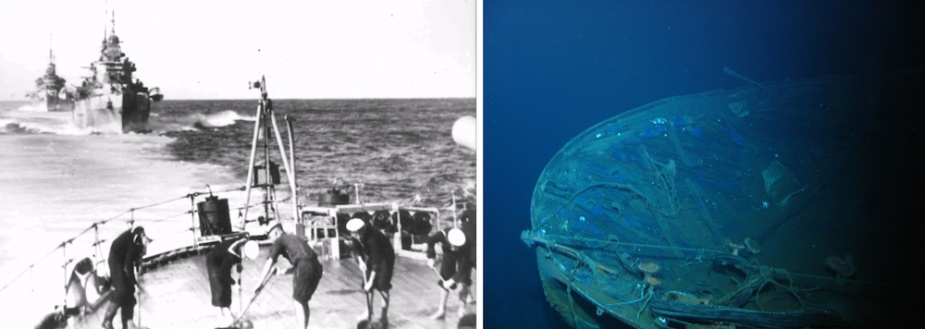You are here
HMAS Sydney (II) - Part 5
HMAS
Sydney
(II) - Part 5
HMAS Sydney (II) wreck investigation
Ship’s crane
Ship’s catapult
4-inch gun deck
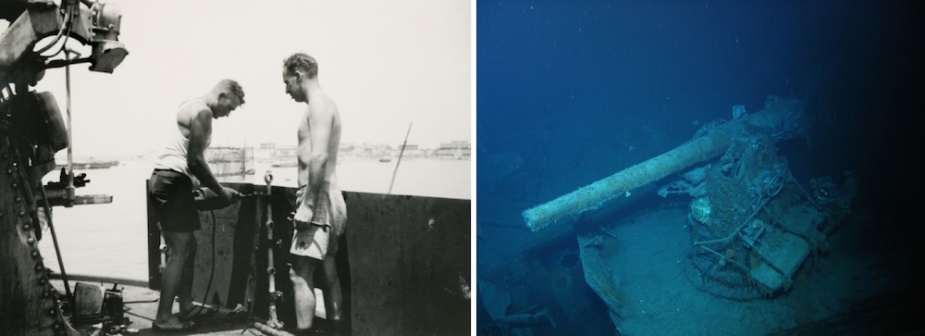
Left: In July 1940 Sydney's shipwrights secured 3/8-inch steel plate to the guardrails surrounding the 4-inch gun deck in an effort to provide guns crews with a measure of protection. Right: Gun 'S2' in situ at the aft end of the gun deck. Beneath its gun barrel can be seen remnants of portions of the 3/8-inch plate seen being fitted at left.
Torpedo tubes

Left: The plans for the port Mk VII QR torpedo mount reveal that each individual tube was assigned a unique alphabetical designation - 'F' 'I' 'R' or 'E'. Right: Visible on the caps of the two closest tubes can be seen the letters 'E' and 'R' confirming them as being part of the port torpedo battery.
Aft control position and search light platform

Left: One of the officer's galley smoke stacks that was once situated in the vicinity of the after searchlight platform lying in silt in the debris field. Middle: The lattice work support of the searchlight platform. Right: The remains of the aft control station lying on its side in the debris field.
X and Y turrets

Sydney's 'X' gun turret, distinguishable by the distinctive rail that was attached to its side armour. When the quarterdeck awning was spread it was secured to this rail, fitting snuggly against the turret. 'X' turret showed signs of severe damage as a result of the action with Kormoran. Seen here is the rear of the turret with the hatches open.
Quarterdeck
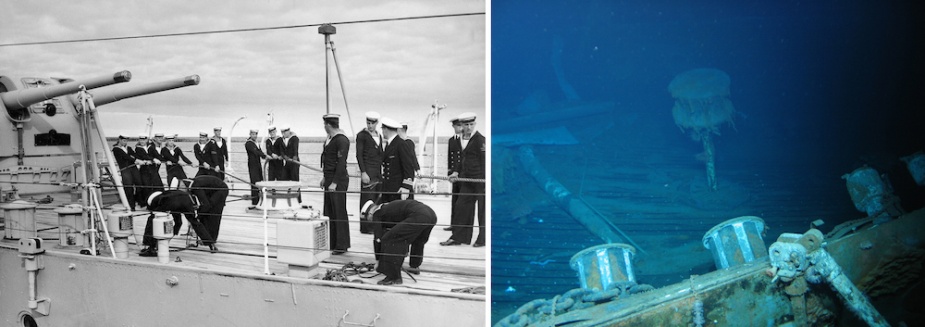
A fine view of Sydney's quarterdeck with a number of distinctive features such as bollards, vents and a captstain visible. Right: These same features appear on this view of Sydney's quarterdeck which has long since imploded, most likely due to a weakend state and the pressure of the water at a depth of more than two kilometres.

